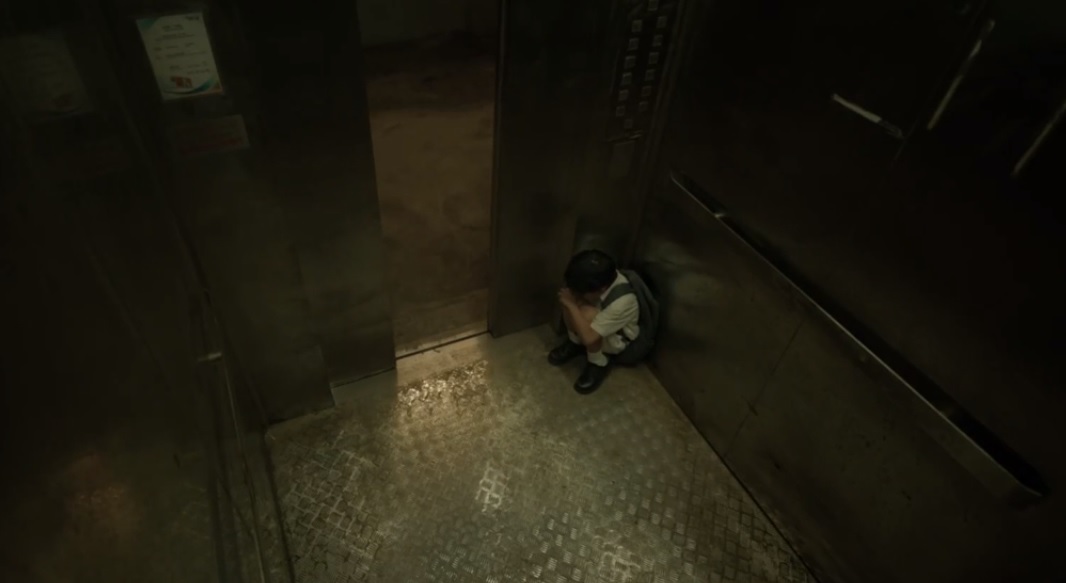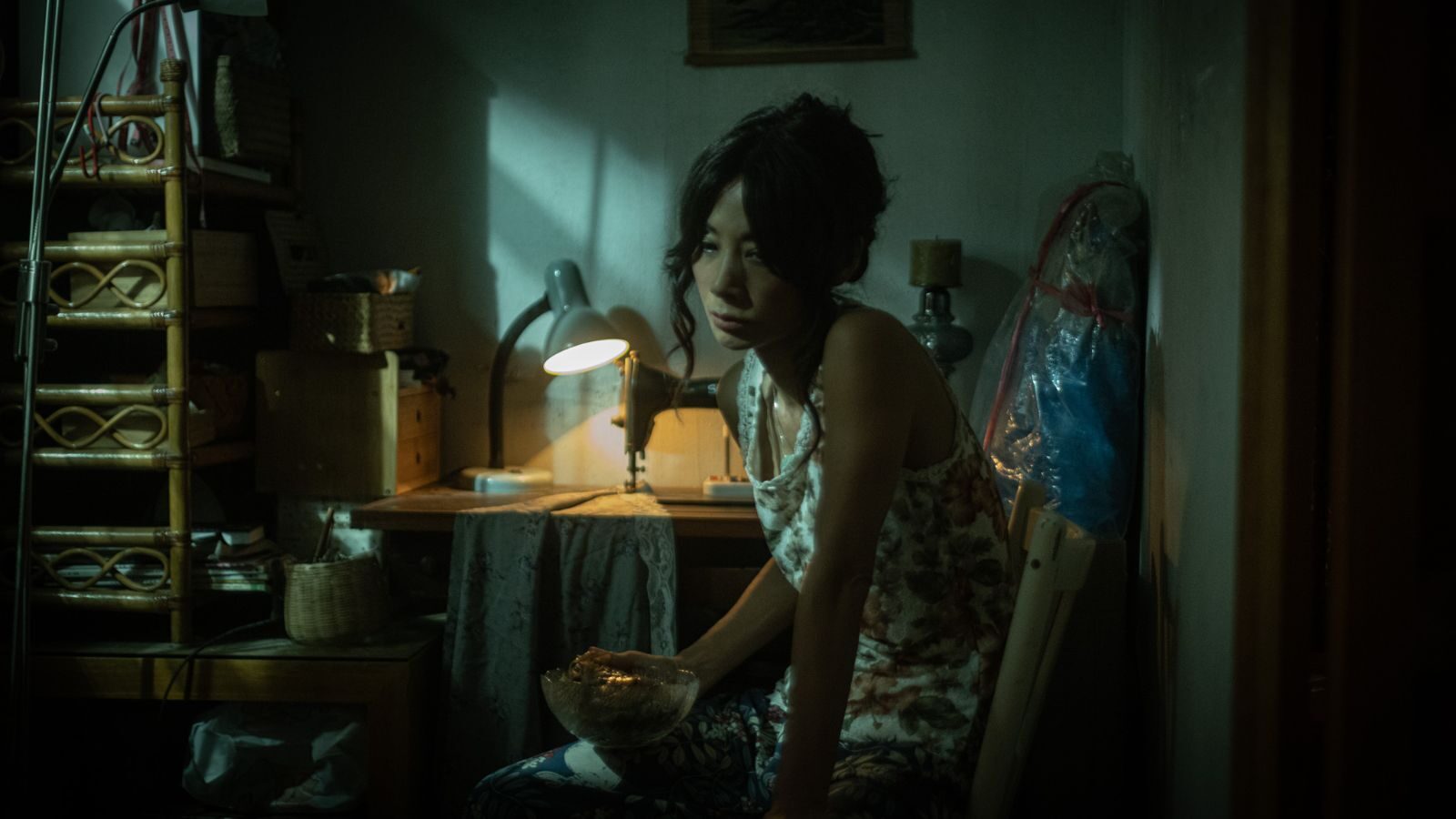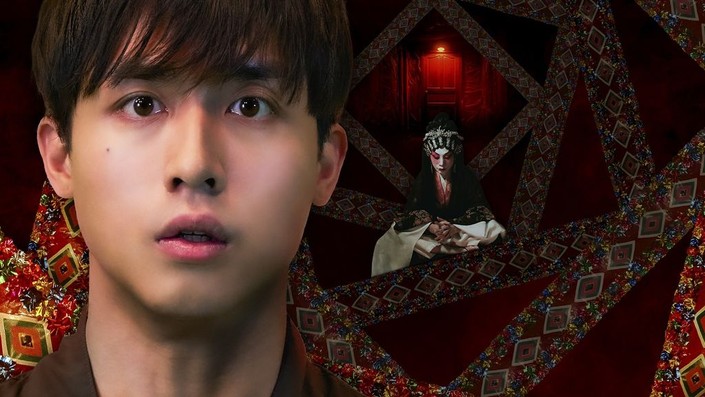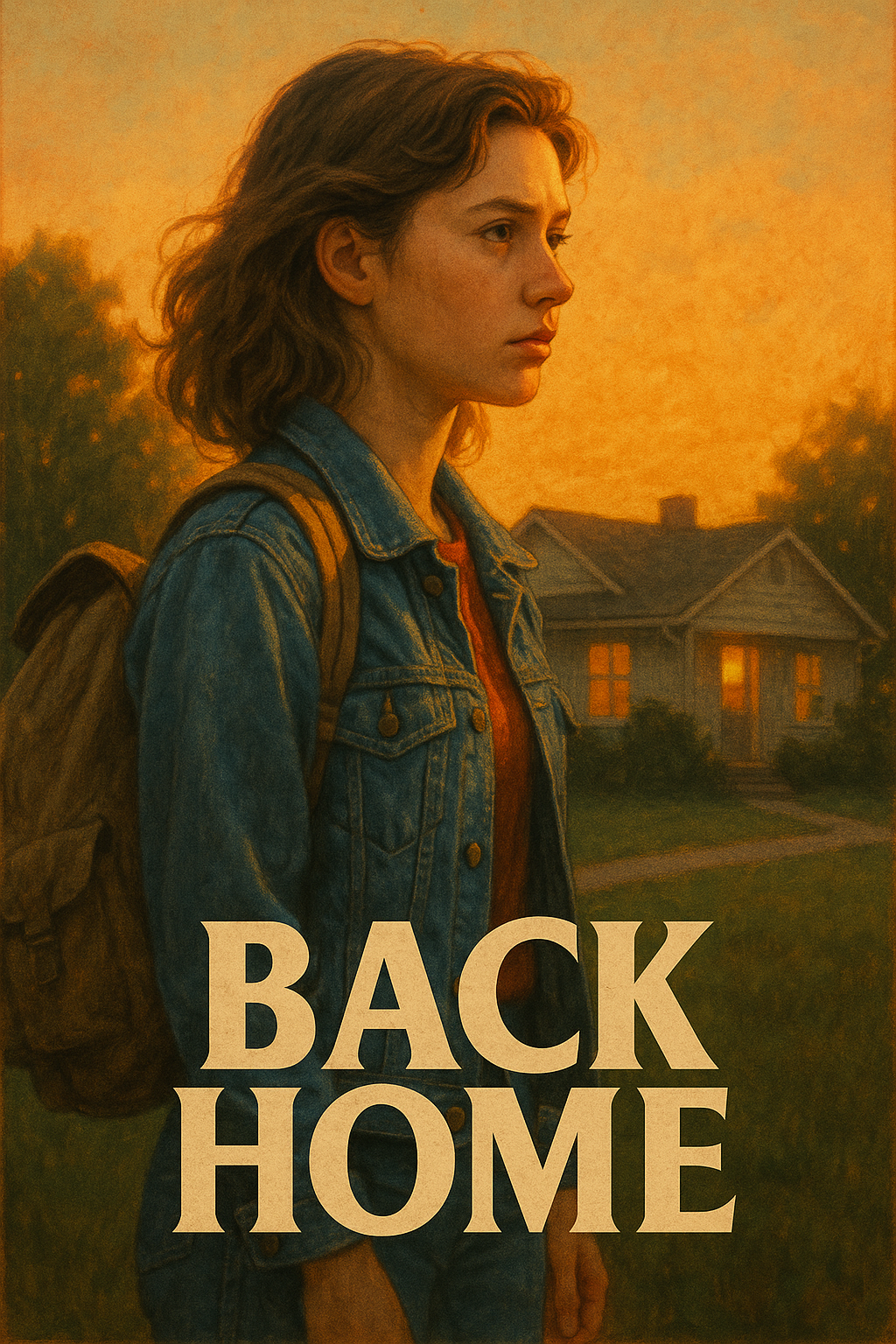Back Home 2023
Back Home 2023

Introduction: An Eerie Return to Hong Kong’s Horror Roots
In the realm of Asian horror cinema, Hong Kong has long been known for its unique blend of traditional Chinese superstitions and modern storytelling techniques. Back Home, the atmospheric 2023 directorial debut from Nate Ki (also known as Nate Tse Ka-ki), brings this tradition roaring back to life with a haunting tale that transcends the boundaries of conventional horror. This film doesn’t just aim to frighten—it invites viewers into a multifaceted exploration of family trauma, cultural identity, and societal metaphor.
Watch the official trailer for Back Home: https://www.youtube.com/embed/YhJmZb15UiU
Plot Overview: When Personal and Supernatural Horrors Collide
Back Home centers on Lai Heung Wing (played by Anson Kong), a young man with the paranormal ability to see ghosts since childhood. After escaping to Canada for a decade to avoid his supernatural curse and troubled past, Wing receives devastating news that his mother Tang Wai-Lan (portrayed brilliantly by Bai Ling) has attempted suicide by cutting out her own tongue and now lies in a coma.

Reluctantly, Wing returns to Hong Kong and the dilapidated apartment building of his youth—a place haunted not just by literal ghosts but by memories of his mother’s abuse and the trauma he endured due to his unwanted gift. As Wing navigates the crumbling halls of his childhood home, his supernatural abilities return in force, and he begins to unravel a sinister mystery involving the building’s abandoned seventh floor, a cult-like community of neighbors, and a series of suspicious suicides.
The longer Wing stays, the more he realizes that the hauntings he experiences are connected to larger forces at work in the building, and the line between the living and the dead becomes increasingly blurred as past and present collide in terrifying ways.
Cast and Performances: Emerging and Veteran Talent Unite
| Actor Name | Character | Notable Performance Aspects |
|---|---|---|
| Anson Kong | Lai Heung Wing | Cantopop star making his serious acting debut with vulnerable, compelling performance |
| Bai Ling | Tang Wai-Lan | Veteran actress delivering a haunting, career-defining role as Wing’s disturbed mother |
| Tai-Bo | Uncle Chung | Provides gravitas as a mysterious elder neighbor with knowledge of the building’s dark past |
| Yuk Ying Tam | Grandma Chung | Creates an unnervingly friendly facade hiding sinister intentions |
| Wesley Wong | Yu | Young actor portraying a child who shares Wing’s supernatural abilities |
| Sean Wong | Young Heung Wing | Delivers heartbreaking portrayal of childhood trauma through flashback scenes |
Anson Kong: From Cantopop Star to Serious Actor

Anson Kong, primarily known as a member of popular Hong Kong boy band Mirror, makes a stunning dramatic transition in Back Home. Discarding his polished pop star image, Kong transforms into the shabby, psychologically fragile Wing with remarkable authenticity. His portrayal of a man spiraling into madness while confronting childhood trauma showcases an unexpected depth and emotional range that signifies a promising acting career beyond his musical roots.
The Directorial Vision of Nate Ki
First-time feature director Nate Ki brings a wealth of creative influences to Back Home. As both writer and director, Ki demonstrates a sophisticated understanding of horror conventions while infusing the film with distinct Hong Kong cultural elements. His background as a novelist and self-taught filmmaker shines through in the movie’s richly textured visual language and symbolic narrative approach.

Ki’s direction pays homage to:
- Classic Hong Kong horror traditions
- Contemporary art-house horror directors like Ari Aster
- The atmospheric tension techniques of David Lynch
- The urban decay aesthetic prominent in works by Fruit Chan
What distinguishes Ki’s approach is his thoughtful balance of explicit horror elements with psychological terror and sociopolitical commentary, marking him as an important new voice in Asian cinema.
Production Design and Cinematography: The Horror of Urban Decay
Back Home utilizes its setting—a dilapidated Hong Kong apartment building—to maximum effect. The production design transforms ordinary spaces into increasingly nightmarish environments that mirror Wing’s psychological deterioration.

The cinematography employs:
- Canted angles to create visual unease
- Claustrophobic framing in narrow corridors
- Sickly yellow tones for daylight scenes
- Vibrant reds and blues for nighttime horror sequences
- Strategic lighting to transform mundane spaces into threatening environments
Perhaps most effective is how the film blurs the boundary between Wing’s memories and present reality, using visual techniques to place him as both observer and participant in his own trauma, sometimes within the same scene.
Cultural Context: Hong Kong’s Horror Traditions
| Hong Kong Horror Element | How It Appears in Back Home |
|---|---|
| Chinese Opera Imagery | Bai Ling’s character appears in traditional opera costume and makeup |
| Ghost Month Traditions | The film incorporates July “Hungry Ghost Festival” symbolism |
| Urban Legends | Local folklore is woven into the building’s mysterious history |
| Traditional Funeral Practices | Paper offerings and spirit money feature prominently |
| Supernatural Beliefs | The “third eye” ability to see ghosts follows Chinese spiritual concepts |
Back Home draws deeply from Hong Kong’s rich tradition of ghost stories and supernatural beliefs. The film incorporates elements of:
- The Hungry Ghost Festival (Yulan Festival), when spirits are believed to visit the living
- Traditional Chinese opera, which often features supernatural tales
- Paper offerings and spirit money rituals for the deceased
- Urban legends unique to Hong Kong’s densely populated housing estates
- Folk beliefs about the “third eye” and spiritual sensitivity

Metaphorical Dimensions: Beyond the Horror Surface
While Back Home succeeds as a straightforward horror film, its deeper significance emerges through its masterful allegorical elements. Director Nate Ki has openly acknowledged the film’s sociopolitical subtext, making it a fascinating reflection of Hong Kong’s complex recent history.
Hong Kong-China Relationship Metaphor
Many critics and viewers have interpreted the film as a commentary on Hong Kong’s relationship with mainland China, particularly in the wake of significant political changes. Key metaphorical elements include:
- Wing’s ability to “see” what others cannot – representing the younger generation’s political awareness
- The mother cutting out her tongue – symbolizing self-censorship and silenced voices
- The community’s willingness to sacrifice children – depicting generational conflict and the toll of political change
- The abandoned seventh floor – potentially representing Hong Kong’s political transition (the handover occurred in July 1997)
- Wing’s escape to Canada – mirroring the emigration of Hong Kong residents seeking political refuge

As film critic from The Beijing Times noted: “Back Home masterfully blends horror with a stinging satire, reflecting the nuanced social and political milieu of Hong Kong’s recent era.” The allegorical elements peppered throughout the movie—the younger generation’s predisposition to see ghosts, Lan’s symbolic act of cutting out her tongue, and the enigmatic history of the estate’s once resplendent seventh floor—all serve as metaphorical reflections of societal issues.
Critical Reception: Acclaim for a Bold Debut
Back Home has garnered significant critical acclaim since its premiere at the New York Asian Film Festival in 2023. Critics have praised:
- The atmospheric direction and visual composition
- Strong performances, particularly from Bai Ling and Anson Kong
- The film’s effective blend of jump scares and psychological horror
- Its cultural specificity and political subtext
- The production design and sound design’s contribution to the horror elements
Audience and Critical Quotes
“A daring effort for what it’s worth, Back Home is an eerie occult horror that works even better as a thinly veiled, caustic parody of Hong Kong’s social and political landscape.” — Rotten Tomatoes Critic Consensus
“This very creepy horror movie is the feature debut for director Nate Ki, who demonstrates both a talent for suggesting rather than spelling out backstory as well as an unabashed streak of cruelty.” — The Guardian
“In his feature debut, Ki has crafted an ambitious and emotionally charged supernatural horror that perfectly captures the regression and regret of returning to a traumatic past.” — Ghouls Magazine
The Horror Elements: What Makes Back Home Truly Frightening

Back Home succeeds as a horror film through its multilayered approach to fear. Rather than relying solely on jump scares or gore, the film builds terror through:
- Psychological horror – Wing’s deteriorating mental state creates uncertainty about what’s real
- Supernatural elements – Various ghostly manifestations tailored to different fear triggers
- Body horror – Self-mutilation and disturbing physical transformations
- Atmospheric dread – Building tension through sound design and visual composition
- Cultural fears – Tapping into specific superstitions and taboos from Chinese tradition
Types of Hauntings in the Film
| Ghost Type | Significance | Visual Presentation |
|---|---|---|
| Child Ghosts | Innocence corrupted, sacrificed youth | Pale, distorted features in dark corners |
| Maternal Spirit | Toxic family relationships | Bai Ling in traditional opera costume |
| Shadow Figures | Repressed memories | Dark silhouettes moving unnaturally |
| Ritualistic Apparitions | Cultural/religious fears | Ceremonial positioning and movements |
| Self-Reflections | Internal psychological horror | Distorted mirror images of Wing himself |
The Sound Design and Score: Auditory Horror
The sound design in Back Home deserves special recognition for its contribution to the film’s terrifying atmosphere. From subtle whispers and distant voices to the unnerving silence before major scares, the audio elements enhance the visual horror substantially.
The score blends traditional Chinese musical elements with contemporary horror techniques, creating a dissonant soundscape that perfectly complements the film’s themes of cultural clash and psychological distress.
Connection to Hong Kong Cinema History and Legacy
Back Home represents a welcome revival of Hong Kong’s horror filmmaking tradition, which had somewhat diminished in recent years. The film draws inspiration from earlier Hong Kong horror classics while updating the approach for contemporary audiences.

By incorporating elements familiar to viewers of classic Hong Kong cinema—including celebrated actress Bai Ling, who bridges different eras of Asian film—Back Home honors cinematic traditions while establishing its own unique identity. The film demonstrates that Hong Kong cinema continues to evolve in exciting ways despite the region’s changing cultural and political landscape.
Cultural Significance: More Than Just Horror
While Back Home functions brilliantly as a horror film, its cultural significance extends beyond genre entertainment. The film preserves and showcases:
- Traditional Hong Kong urban settings and lifestyles
- Cultural practices that might otherwise fade from collective memory
- Local folklore and superstitions specific to the region
- Commentary on contemporary social issues
- A snapshot of Hong Kong’s complex identity in transition
These elements elevate the film beyond simple scares to become an important cultural document of a specific time and place.
Conclusion: A Must-Watch for Horror Fans and Cultural Enthusiasts
Back Home stands as one of the most compelling horror debuts in recent Hong Kong cinema. Director Nate Ki has crafted a film that works on multiple levels: as a straightforward horror experience full of effective scares, as a psychological exploration of family trauma, and as a nuanced metaphorical examination of Hong Kong’s sociopolitical situation.
With standout performances, particularly from Bai Ling and Anson Kong, along with impressive technical elements, Back Home represents the exciting possibilities of contemporary Hong Kong filmmaking. It honors horror traditions while pushing boundaries in terms of both scarecraft and thematic depth.
Whether you’re a dedicated horror fan or someone interested in Asian cinema’s exploration of cultural identity and political metaphor, Back Home offers a viewing experience that will stay with you long after the credits roll—perhaps haunting your thoughts in the best possible way.
Where to Watch Back Home
The film is available on several streaming platforms, including MUBI, and has been featured at international film festivals including the New York Asian Film Festival. For horror enthusiasts and those interested in Hong Kong cinema, Back Home represents an essential viewing experience that showcases the continuing vitality and creativity of Asian horror filmmaking.
Tags: Back Home, Hong Kong horror, Anson Kong, Bai Ling, Nate Ki, Asian horror cinema, Ghost stories, Cultural metaphors, Political allegory, Hong Kong cinema
Related Articles
- The Revival of Hong Kong Horror Cinema
- Understanding Chinese Ghost Month Traditions
- Cantopop Stars Who Successfully Transitioned to Acting
- Bai Ling: The Versatile Career of a Hong Kong Icon
- Political Metaphors in Modern Asian Cinema
What did you think of Back Home? Share your thoughts in the comments below!
